Aboveground vs Inground Fibreglass Pools
The allure of having a private swimming pool has been growing among homeowners and pool enthusiasts alike. Whether it's for relaxation, exercise, or enhancing the aesthetic value of your property, a pool can be a fantastic addition to your home. Among the various types available, fibreglass pools have gained considerable popularity due to their durability, ease of maintenance, and sleek designs. However, one crucial decision you'll need to make is whether to opt for an aboveground or inground fibreglass pool. Understanding the differences between these two options can help you make an informed decision that best suits your needs and preferences.
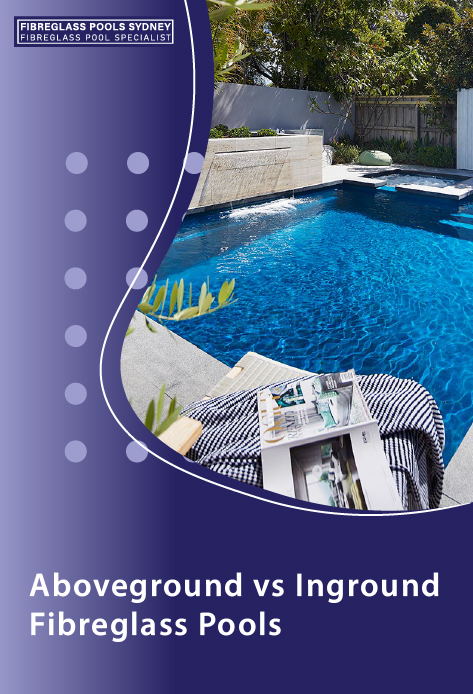
Aboveground Fibreglass Pools
Definition and Basic Features
Aboveground fibreglass pools are installed on the surface of your property rather than being embedded into the ground. These pools are pre-fabricated and delivered as a complete unit, making the installation process relatively quick and straightforward.
Advantages
Cost-Effective: Generally, aboveground pools are less expensive to install than inground pools.
Flexibility: These pools can be disassembled and relocated if needed.
Quick Installation: The installation process is faster and less invasive than inground pool installations.
Versatility: They can be installed in various locations and terrains.
Disadvantages
Aesthetics: Aboveground pools may not offer the same seamless and integrated look as inground pools.
Durability: While fibreglass is durable, aboveground pools may require more frequent maintenance and repairs.
Limited Depth: These pools typically offer less depth compared to inground options.
Ideal Scenarios for Installation
Aboveground fibreglass pools are ideal for homeowners who are looking for a budget-friendly option or those who may want the flexibility to relocate the pool in the future. They are also perfect for properties with challenging terrains where digging might be impractical.
Cost Comparison with Inground Pools
Aboveground pools are generally more affordable, depending on size and additional features. In contrast, inground fibreglass pools can be significantly more expensive.
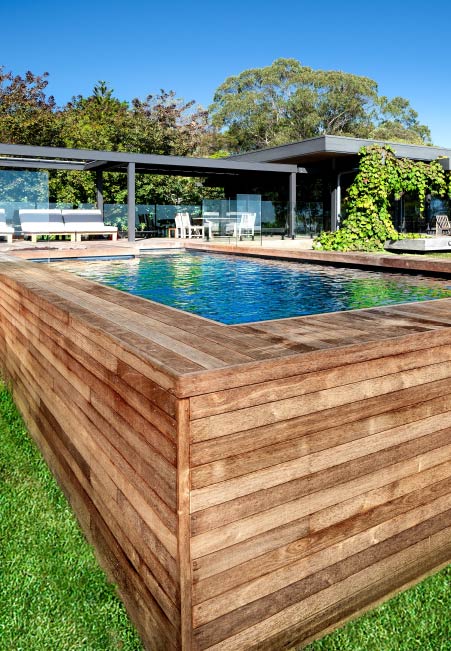
Inground Fibreglass Pools
Definition and Basic Features
Inground fibreglass pools are installed below the ground level, providing a more permanent and aesthetically pleasing option compared to above-ground pools. These pools are also pre-fabricated and delivered as a single unit, which ensures consistent quality and durability. However, the installation process involves significant work, including excavation and site preparation, to ensure a proper fit and long-lasting performance. Once installed, inground fibreglass pools offer a smooth, non-porous surface that resists algae growth and requires less maintenance, making them a popular choice for homeowners looking to enhance their outdoor living space.
Advantages
Aesthetics: Inground pools offer a seamless, integrated look that enhances your property’s landscape.
Durability: These pools are highly durable and generally require less frequent maintenance.
Variety: Inground pools offer more design, shape, and size options.
Depth: Greater depth options make these pools suitable for diving and other activities.
Disadvantages
Cost: Inground pools are more expensive to install.
Time-Consuming Installation: The installation process is longer and more invasive.
Permanence: Once installed, these pools are permanent fixtures and cannot be relocated.
Installation Requirements and Process
Installing an inground fibreglass pool involves many crucial steps, ensuring the final result is both durable and visually stunning. The process begins with careful planning and design, followed by excavation of the designated area. Site preparation is then undertaken to ensure a stable foundation, which includes levelling the ground and adding a base layer of gravel or sand. Next, the pool shell is carefully placed into the excavated site, ensuring it is perfectly aligned. Plumbing and electrical systems are installed to allow for proper filtration and lighting. Finally, the surrounding area is backfilled, and the pool is filled with water.
Long-Term Benefits and Cost Considerations
While the initial investment is higher, inground fibreglass pools offer long-term benefits such as increased property value and lower maintenance costs. They are built to last for decades, making them a worthwhile investment. These pools require less chemical usage and are less prone to algae growth compared to traditional pools, which translates to significant savings on upkeep. Additionally, their smooth, non-porous surface provides a more comfortable swimming experience and enhances aesthetic appeal, making them a preferred choice for many homeowners.
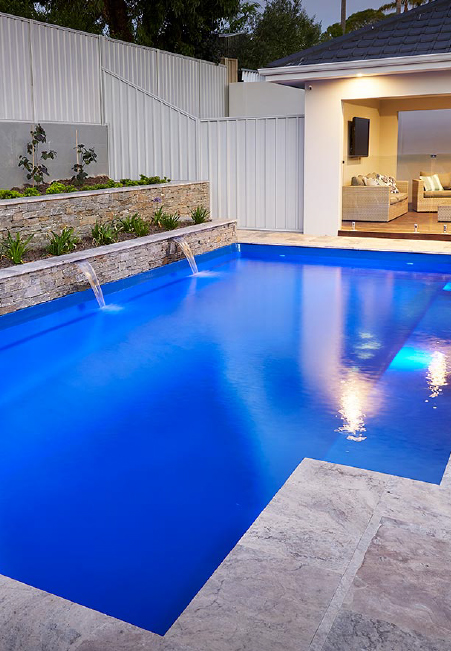
Key Differences
Design
Aboveground: Limited design options; usually round or oval shapes.
Inground: Extensive design choices, including custom shapes and sizes.
Installation
Aboveground: Quick and less invasive.
Inground: Time-consuming and requires excavation.
Maintenance
Aboveground: May require more frequent maintenance.
Inground: Generally easier to maintain due to better filtration systems and integrated design.
Longevity
Aboveground: Good longevity but may require more repairs.
Inground: Excellent longevity, often lasting decades with minimal issues.
Catering to Different Needs
Aboveground: Ideal for budget-conscious homeowners or those needing flexibility.
Inground: Best for those seeking a permanent, aesthetically pleasing addition to their property.
Making the Right Choice
Factors to Consider
Budget: Determine your budget and consider both initial costs and long-term expenses.
Property Layout: Assess your property’s layout and terrain to see which type of pool would be more feasible.
Intended Use: Consider how you plan to use the pool. For example, if you want a diving pool, an inground option would be more suitable.
Aesthetic Preferences: Think about how important the visual appeal of the pool is to you.
Professional Advice and Recommendations
Consulting with a pool installation professional can provide you with personalised advice based on your specific circumstances. They can assess your property, discuss your needs, and help you make an informed decision. These experts have extensive experience in the field and can advise you on the best pool designs and materials suited to your environment. Additionally, they can offer insights on maintenance, safety features, and potential costs, ensuring that you are well-prepared for every aspect of pool ownership.
Conclusion
Choosing between an aboveground and inground fibreglass pool ultimately comes down to your budget, property layout, and personal preferences. Both options offer unique benefits and can provide endless enjoyment if chosen wisely. Take the time to assess your needs, consult with professionals, and make a decision that aligns with your lifestyle and budget.
Ready to dive into the world of fibreglass pools? Contact us today for a free pool quote and let us help you turn your dream pool into a reality.
Aboveground vs Inground Fibreglass Pools
The allure of having a private swimming pool has been growing among homeowners and pool enthusiasts alike. Whether it's for relaxation, exercise, or enhancing the aesthetic value of your property, a pool can be a fantastic addition to your home. Among the various types available, fibreglass pools have gained considerable popularity due to their durability, ease of maintenance, and sleek designs. However, one crucial decision you'll need to make is whether to opt for an aboveground or inground fibreglass pool. Understanding the differences between these two options can help you make an informed decision that best suits your needs and preferences.
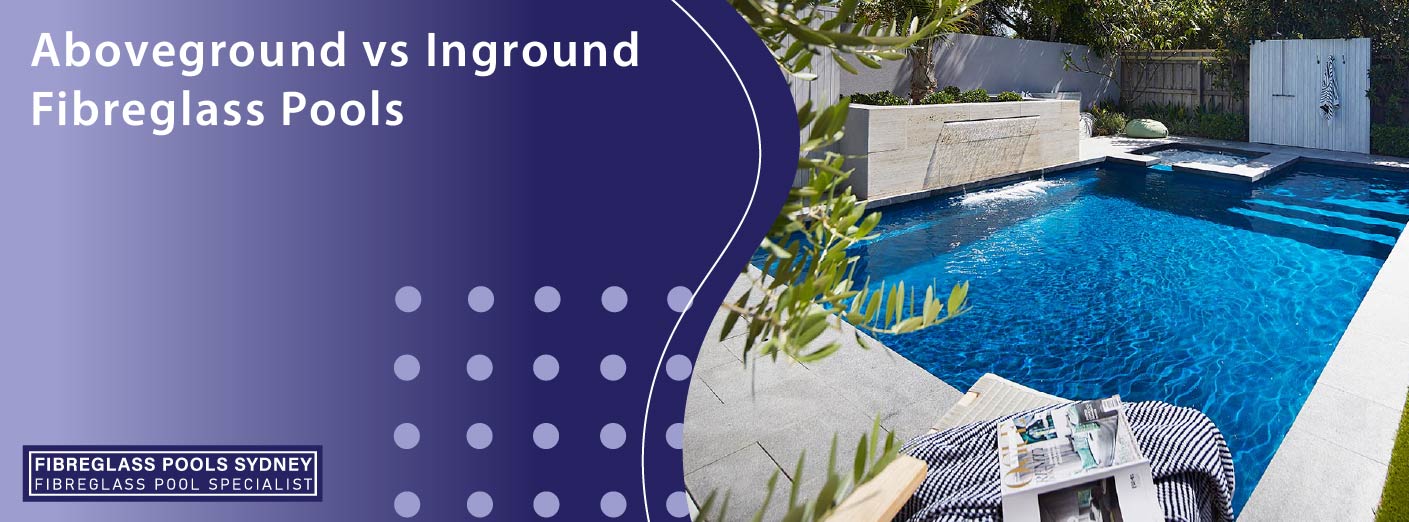
Aboveground Fibreglass Pools
Definition and Basic Features
Aboveground fibreglass pools are installed on the surface of your property rather than being embedded into the ground. These pools are pre-fabricated and delivered as a complete unit, making the installation process relatively quick and straightforward.
Advantages
Cost-Effective: Generally, aboveground pools are less expensive to install than inground pools.
Flexibility: These pools can be disassembled and relocated if needed.
Quick Installation: The installation process is faster and less invasive than inground pool installations.
Versatility: They can be installed in various locations and terrains.
Disadvantages
Aesthetics: Aboveground pools may not offer the same seamless and integrated look as inground pools.
Durability: While fibreglass is durable, aboveground pools may require more frequent maintenance and repairs.
Limited Depth: These pools typically offer less depth compared to inground options.
Ideal Scenarios for Installation
Aboveground fibreglass pools are ideal for homeowners who are looking for a budget-friendly option or those who may want the flexibility to relocate the pool in the future. They are also perfect for properties with challenging terrains where digging might be impractical.
Cost Comparison with Inground Pools
Aboveground pools are generally more affordable, depending on size and additional features. In contrast, inground fibreglass pools can be significantly more expensive.
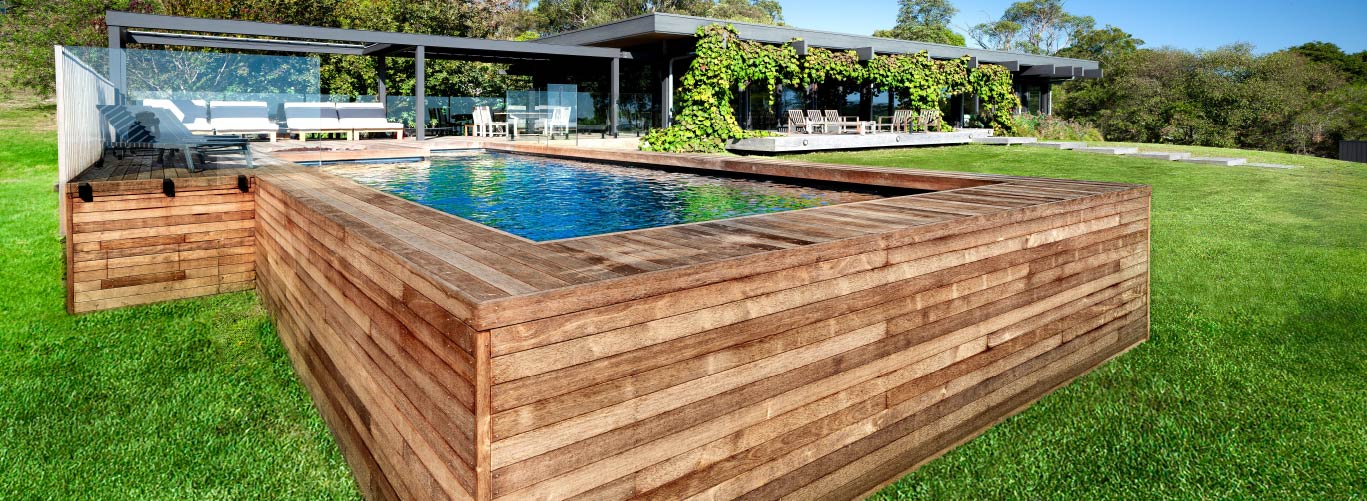
Inground Fibreglass Pools
Definition and Basic Features
Inground fibreglass pools are installed below the ground level, providing a more permanent and aesthetically pleasing option compared to above-ground pools. These pools are also pre-fabricated and delivered as a single unit, which ensures consistent quality and durability. However, the installation process involves significant work, including excavation and site preparation, to ensure a proper fit and long-lasting performance. Once installed, inground fibreglass pools offer a smooth, non-porous surface that resists algae growth and requires less maintenance, making them a popular choice for homeowners looking to enhance their outdoor living space.
Advantages
Aesthetics: Inground pools offer a seamless, integrated look that enhances your property’s landscape.
Durability: These pools are highly durable and generally require less frequent maintenance.
Variety: Inground pools offer more design, shape, and size options.
Depth: Greater depth options make these pools suitable for diving and other activities.
Disadvantages
Cost: Inground pools are more expensive to install.
Time-Consuming Installation: The installation process is longer and more invasive.
Permanence: Once installed, these pools are permanent fixtures and cannot be relocated.
Installation Requirements and Process
Installing an inground fibreglass pool involves many crucial steps, ensuring the final result is both durable and visually stunning. The process begins with careful planning and design, followed by excavation of the designated area. Site preparation is then undertaken to ensure a stable foundation, which includes levelling the ground and adding a base layer of gravel or sand. Next, the pool shell is carefully placed into the excavated site, ensuring it is perfectly aligned. Plumbing and electrical systems are installed to allow for proper filtration and lighting. Finally, the surrounding area is backfilled, and the pool is filled with water.
Long-Term Benefits and Cost Considerations
While the initial investment is higher, inground fibreglass pools offer long-term benefits such as increased property value and lower maintenance costs. They are built to last for decades, making them a worthwhile investment. These pools require less chemical usage and are less prone to algae growth compared to traditional pools, which translates to significant savings on upkeep. Additionally, their smooth, non-porous surface provides a more comfortable swimming experience and enhances aesthetic appeal, making them a preferred choice for many homeowners.
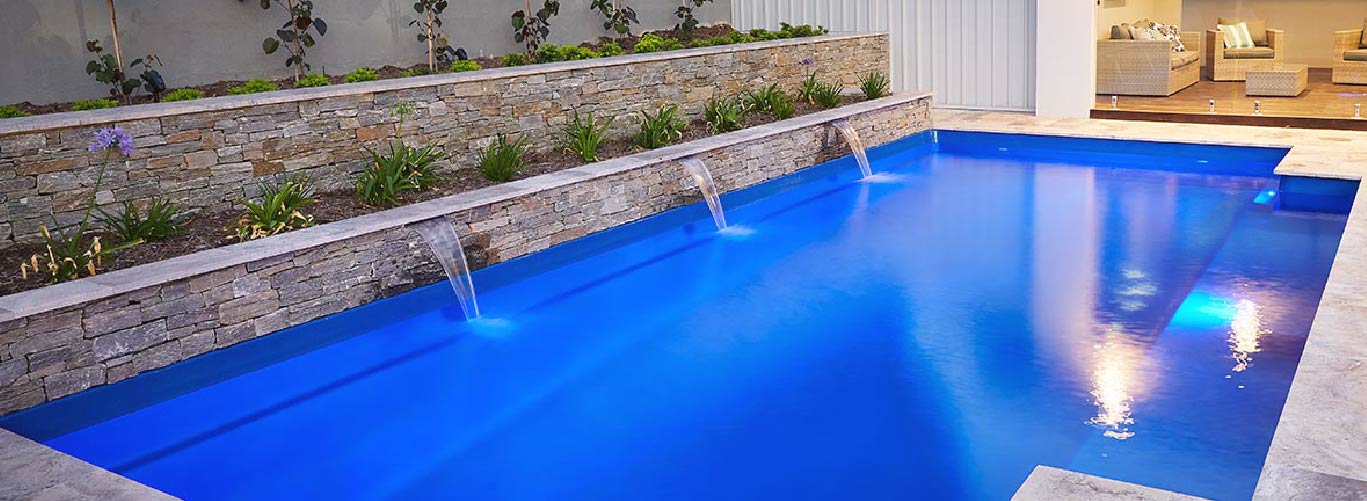
Key Differences
Design
Aboveground: Limited design options; usually round or oval shapes.
Inground: Extensive design choices, including custom shapes and sizes.
Installation
Aboveground: Quick and less invasive.
Inground: Time-consuming and requires excavation.
Maintenance
Aboveground: May require more frequent maintenance.
Inground: Generally easier to maintain due to better filtration systems and integrated design.
Longevity
Aboveground: Good longevity but may require more repairs.
Inground: Excellent longevity, often lasting decades with minimal issues.
Catering to Different Needs
Aboveground: Ideal for budget-conscious homeowners or those needing flexibility.
Inground: Best for those seeking a permanent, aesthetically pleasing addition to their property.
Making the Right Choice
Factors to Consider
Budget: Determine your budget and consider both initial costs and long-term expenses.
Property Layout: Assess your property’s layout and terrain to see which type of pool would be more feasible.
Intended Use: Consider how you plan to use the pool. For example, if you want a diving pool, an inground option would be more suitable.
Aesthetic Preferences: Think about how important the visual appeal of the pool is to you.
Professional Advice and Recommendations
Consulting with a pool installation professional can provide you with personalised advice based on your specific circumstances. They can assess your property, discuss your needs, and help you make an informed decision. These experts have extensive experience in the field and can advise you on the best pool designs and materials suited to your environment. Additionally, they can offer insights on maintenance, safety features, and potential costs, ensuring that you are well-prepared for every aspect of pool ownership.
Conclusion
Choosing between an aboveground and inground fibreglass pool ultimately comes down to your budget, property layout, and personal preferences. Both options offer unique benefits and can provide endless enjoyment if chosen wisely. Take the time to assess your needs, consult with professionals, and make a decision that aligns with your lifestyle and budget.
Ready to dive into the world of fibreglass pools? Contact us today for a free pool quote and let us help you turn your dream pool into a reality.



